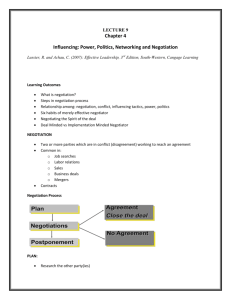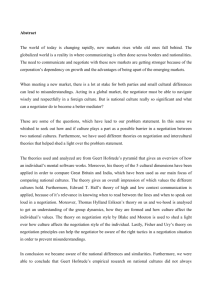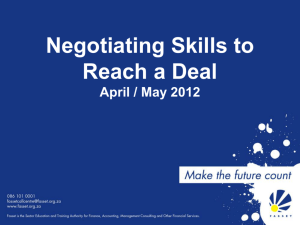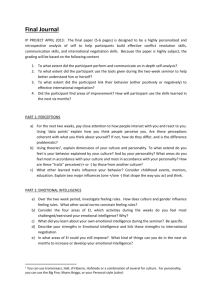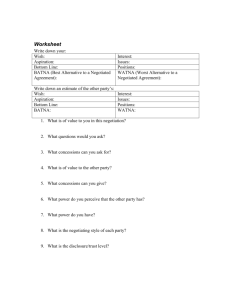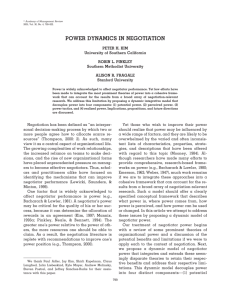Chapter Two Questions
advertisement
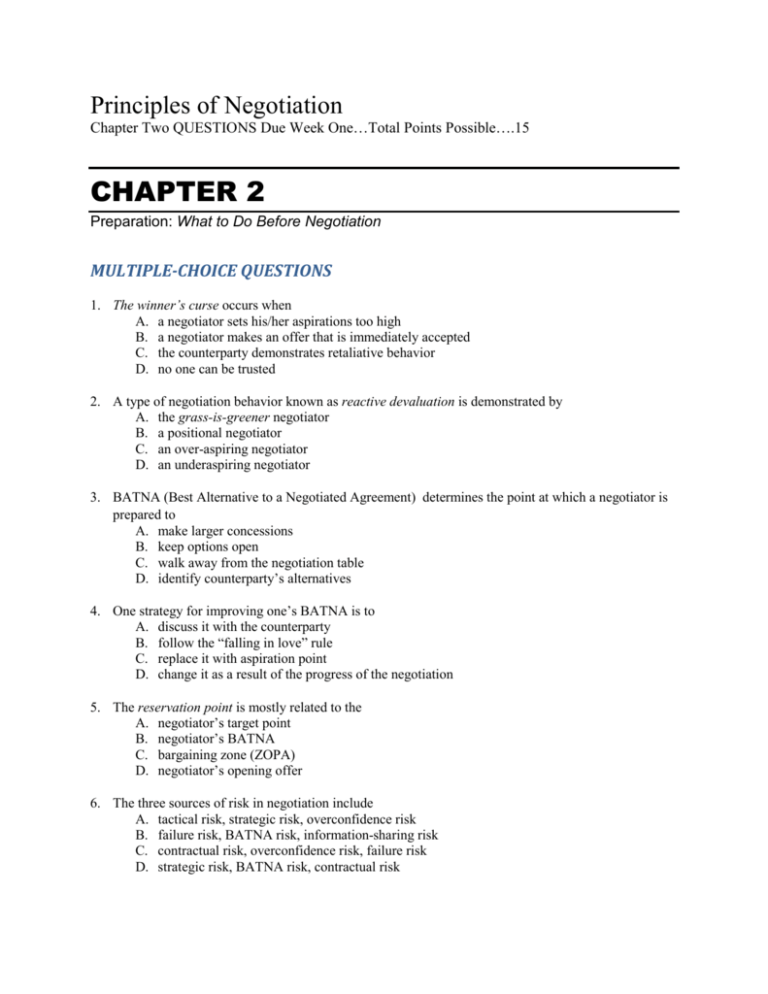
Principles of Negotiation Chapter Two QUESTIONS Due Week One…Total Points Possible….15 CHAPTER 2 Preparation: What to Do Before Negotiation MULTIPLE-CHOICE QUESTIONS 1. The winner’s curse occurs when A. a negotiator sets his/her aspirations too high B. a negotiator makes an offer that is immediately accepted C. the counterparty demonstrates retaliative behavior D. no one can be trusted 2. A type of negotiation behavior known as reactive devaluation is demonstrated by A. the grass-is-greener negotiator B. a positional negotiator C. an over-aspiring negotiator D. an underaspiring negotiator 3. BATNA (Best Alternative to a Negotiated Agreement) determines the point at which a negotiator is prepared to A. make larger concessions B. keep options open C. walk away from the negotiation table D. identify counterparty’s alternatives 4. One strategy for improving one’s BATNA is to A. discuss it with the counterparty B. follow the “falling in love” rule C. replace it with aspiration point D. change it as a result of the progress of the negotiation 5. The reservation point is mostly related to the A. negotiator’s target point B. negotiator’s BATNA C. bargaining zone (ZOPA) D. negotiator’s opening offer 6. The three sources of risk in negotiation include A. tactical risk, strategic risk, overconfidence risk B. failure risk, BATNA risk, information-sharing risk C. contractual risk, overconfidence risk, failure risk D. strategic risk, BATNA risk, contractual risk 7. The endowment effect is A. the difference between what sellers demand and what buyers are willing to pay B. a tendency for people to value an object more once they own it C. the value we associate with a certain object or outcome D. saving money instead of purchasing goods 8. A dispute occurs when A. parties have to resort to their BATNAs B. parties fail to exchange resources C. a claim is made by one party and rejected by the other party D. we turn down favors and rewards from others 9. Most commonly, third-party intervention takes the form of A. power differential B. pie-slicing C. partnership D. mediation or arbitration 10. Which of the following statements are not true when it comes to BATNAs? A. They are dynamic and constantly changing B. It is generally wise to reveal them C. They are determined by the negotiator’s available options D. They are a good anchor point for the negotiator Discussion Questions-Please complete all five 1. What is the fixed-pie perception, and how does it affect a person’s preparation for negotiation? 2. What are some of the problems that arise in the determination of one’s target or aspiration point in a negotiation? 3. What is the difference between a target point and reservation point, and why is it important not to confuse the two? 4. Why should negotiators break down the issues in a negotiation into multiple issues, rather than engage in a single-issue negotiation? 5. Why is it advisable to assess the self, the counterparty, and any negotiation situation before commencing negotiations? What are some of the questions a negotiator needs to address when assessing the negotiation situation?
